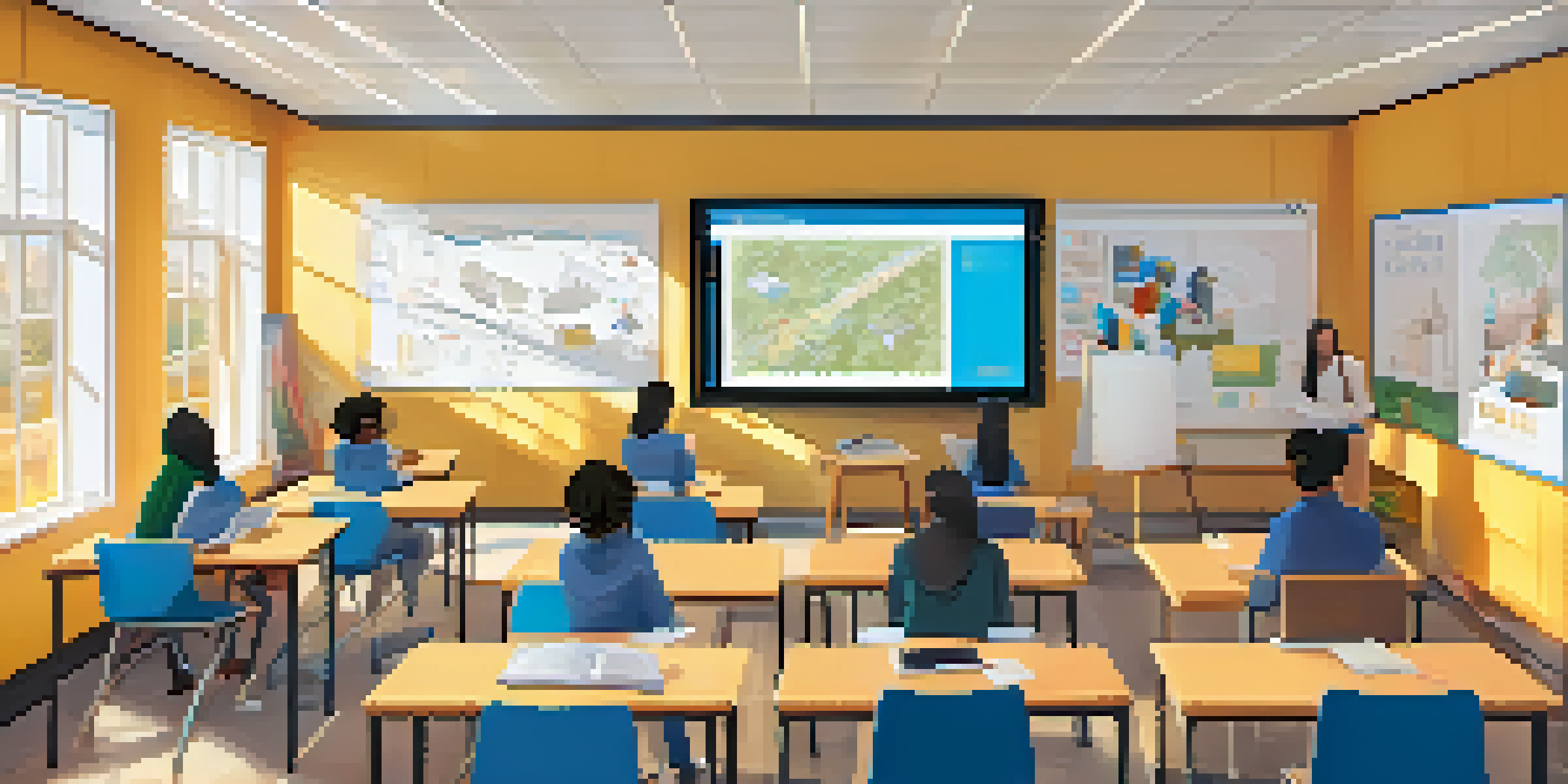Exploring Hybrid Learning Models: A Blended Approach

Understanding Hybrid Learning: What is it Exactly?
Hybrid learning combines traditional face-to-face instruction with online learning, creating a flexible educational experience. Imagine attending a class where some students are physically present while others join via video call. This approach allows for a more personalized learning environment, catering to different needs and preferences.
The future of learning is not in a classroom, but in the collaboration of minds across platforms and borders.
In a hybrid model, educators can leverage technology to enhance teaching methods, making lessons more interactive and engaging. For instance, an instructor might use online quizzes to gauge understanding in real-time, allowing for immediate feedback. This blend of modalities can lead to improved student outcomes as learners engage with the content in various ways.
Furthermore, hybrid learning promotes self-paced education, giving students the autonomy to control their learning journey. With resources available online, learners can revisit complex topics at their own speed, making education more accessible and tailored to individual needs.
Key Benefits of Hybrid Learning Models
One of the standout benefits of hybrid learning is its flexibility, which accommodates diverse student schedules and learning preferences. For busy professionals or students with family commitments, the option to attend classes online can make education more attainable. This flexibility also extends to course materials, allowing students to access resources anytime, anywhere.

Another significant advantage is the potential for increased engagement. By integrating multimedia elements such as videos, podcasts, and interactive forums, students often find the learning experience more stimulating. This engaged atmosphere can lead to higher retention rates and a deeper understanding of the material.
Hybrid Learning Offers Flexibility
This model accommodates diverse student schedules and learning preferences, making education more accessible.
Additionally, hybrid learning fosters a sense of community among students. Even when learning remotely, platforms can facilitate discussions and group projects, creating connections and collaboration opportunities. This sense of belonging can motivate students and enhance their overall educational experience.
Challenges of Implementing Hybrid Learning Models
Despite the benefits, hybrid learning models come with their own set of challenges. One of the most pressing issues is ensuring that all students have access to the necessary technology. Not everyone has a reliable internet connection or the latest devices, which can create disparities in the learning experience.
Education is the most powerful weapon which you can use to change the world.
Moreover, teachers may face difficulties in adjusting their teaching methods to accommodate both in-person and online students. Striking the right balance between the two modalities requires careful planning and creativity. Educators must develop strategies that keep all students engaged, regardless of their learning environment.
There’s also the concern of student accountability in a hybrid setup. With the flexibility of online learning, some students may struggle with motivation and time management. Building a strong support system and fostering a culture of responsibility can help mitigate these issues and ensure student success.
Technology's Role in Hybrid Learning
Technology serves as the backbone of hybrid learning, driving the integration of online and offline education. Learning management systems (LMS) like Moodle and Canvas enable instructors to share resources, track progress, and facilitate communication. These platforms create a seamless learning environment where students can easily access materials and stay connected with their peers and instructors.
Additionally, tools like video conferencing apps (e.g., Zoom or Google Meet) allow for real-time interaction between students and teachers. This technology can replicate the classroom experience, making discussions and group work possible even from a distance. The effective use of technology can enhance collaboration and create a dynamic learning atmosphere.
Technology Enhances Learning Engagement
Tools like LMS and video conferencing foster interactive and collaborative learning experiences.
However, it’s essential for both educators and students to be trained in these technologies. Familiarity with the tools can significantly reduce frustration and improve the overall learning experience. Ongoing support and training can empower everyone involved to make the most of the hybrid learning model.
Designing Effective Hybrid Learning Courses
Creating a successful hybrid learning course requires thoughtful design that considers the needs of all students. Educators should start by clearly defining learning objectives and aligning them with both online and in-person activities. This alignment ensures that students understand the purpose of each component and how it contributes to their overall learning.
Incorporating diverse teaching methods can also enhance the hybrid course experience. For example, blending lectures with hands-on activities, discussions, and group projects can cater to different learning styles. This variety keeps students engaged and allows them to process information in multiple ways.
Finally, regular assessments and feedback are crucial in a hybrid environment. By frequently checking in on student progress, educators can identify areas for improvement and adjust their teaching strategies accordingly. Feedback loops help maintain accountability and encourage students to take an active role in their education.
The Future of Hybrid Learning Models
As we look ahead, hybrid learning models are likely to continue evolving, influenced by advancements in technology and shifts in educational philosophy. The global pandemic has accelerated the adoption of online learning, prompting institutions to rethink traditional approaches. This shift presents an opportunity to create more inclusive and adaptable educational frameworks.
Moreover, as students become more accustomed to hybrid learning, their expectations will change. Future learners may demand even greater flexibility, personalized learning experiences, and access to diverse resources. Educators will need to stay agile, embracing new tools and methods to meet these expectations.
Challenges Require Strategic Solutions
Addressing technology access and instructional design is crucial for successful hybrid learning implementation.
Ultimately, the future of hybrid learning lies in a balance between the best of both worlds: the structure of in-person classes and the flexibility of online education. By continually refining these models, we can create richer and more effective learning experiences that prepare students for success in an ever-changing world.
Conclusion: Embracing Hybrid Learning for a Brighter Future
In conclusion, hybrid learning models offer a unique opportunity to blend the strengths of traditional and online education. By embracing this approach, educators can create more flexible, engaging, and inclusive learning environments that cater to diverse student needs. The potential for personalized learning experiences can lead to better outcomes and greater student satisfaction.
However, it’s important to navigate the challenges that come with hybrid learning, particularly in terms of technology access and instructional design. By investing in training and resources, both educators and students can thrive in this new landscape. As we move forward, a commitment to continuous improvement will be key to unlocking the full potential of hybrid education.

Ultimately, hybrid learning is not just a temporary solution but a pathway to a more innovative and adaptable educational future. By embracing this model, we can ensure that learning remains accessible, engaging, and effective for all students, regardless of their circumstances.